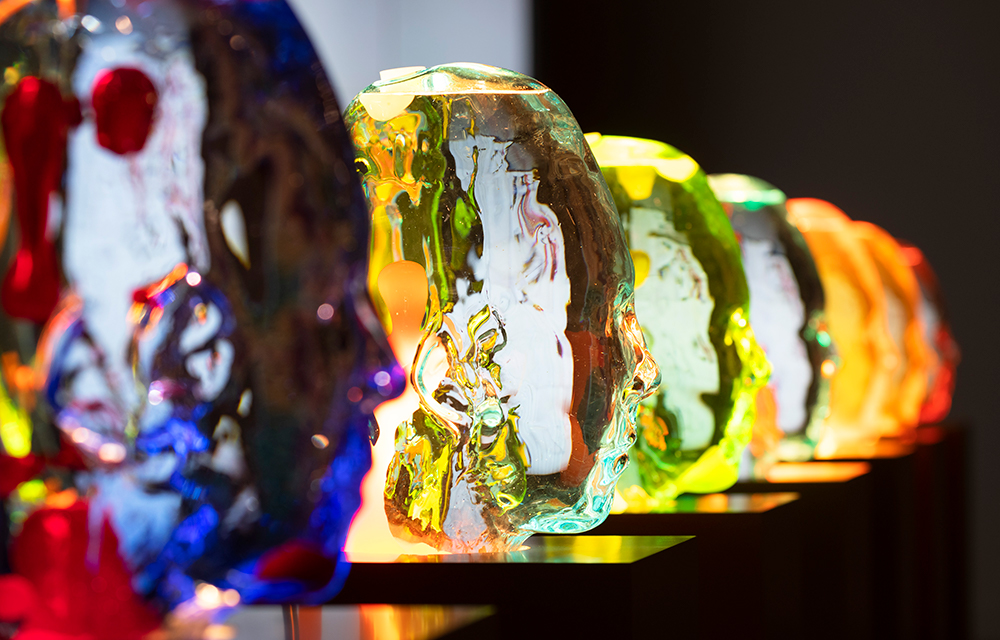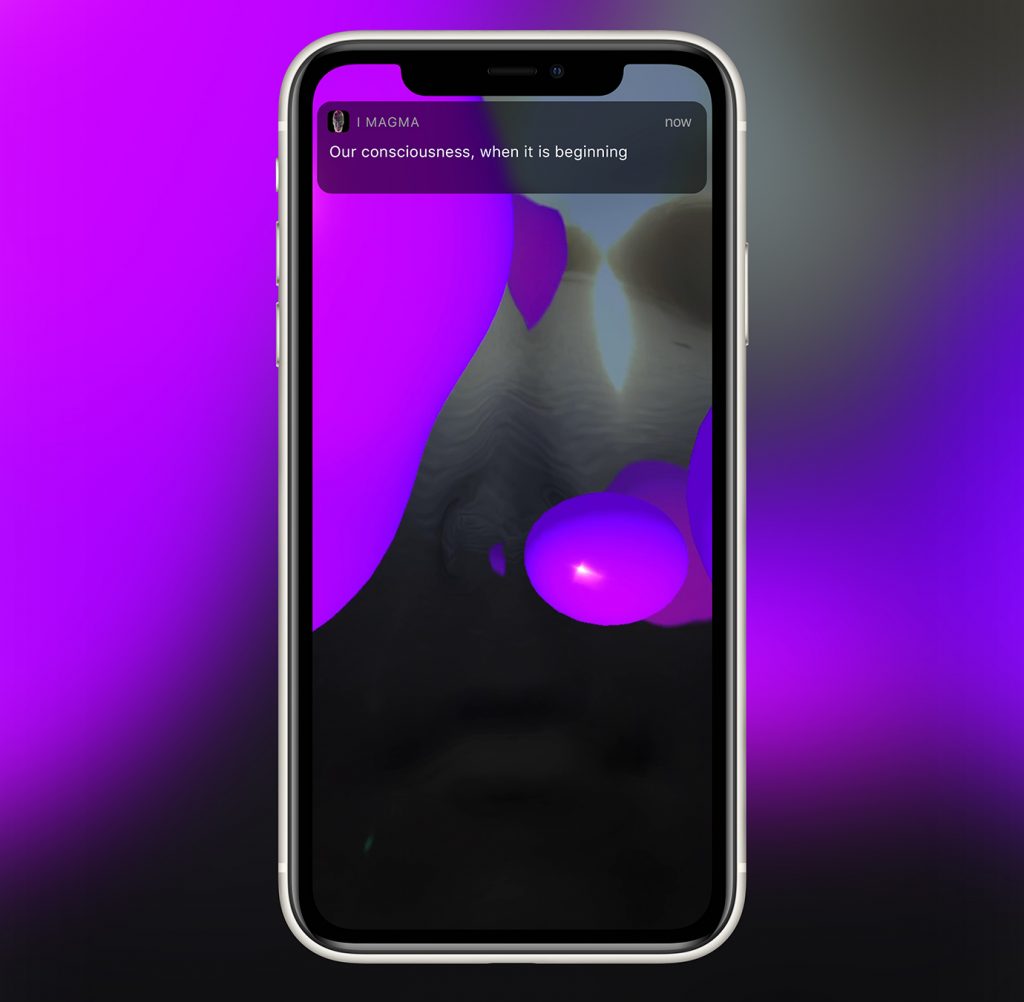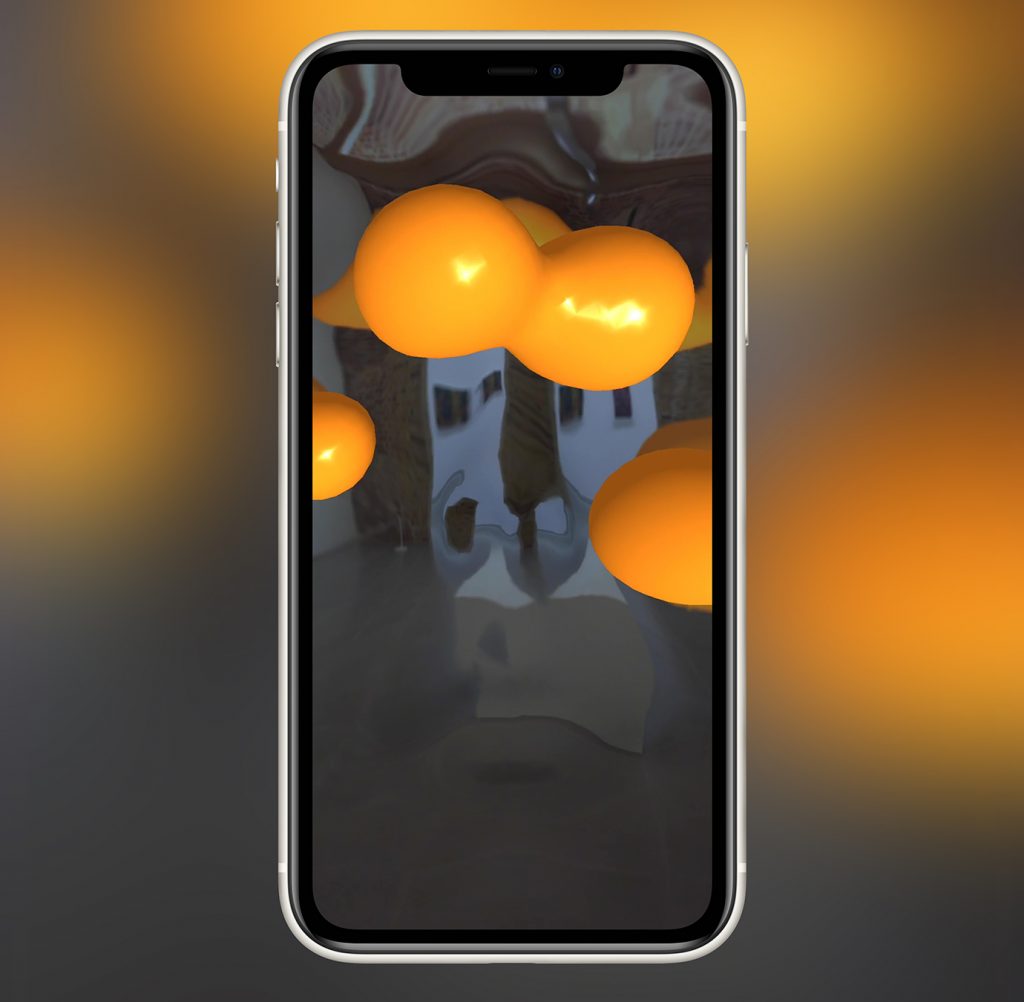Launched with the August full moon, New Mystics has released its latest collaboratively authored artist texts, with a contribution from Berlin based Finnish artist Jenna Sutela co-published today with AQNB.

Organized by artist and writer Alice Bucknell, New Mystics is a project investigating the practices of 12 artists that explore mysticism, ritual and their expression through technologies such as artificial intelligence. With writing made in collaborative processes between participating artists, Bucknell and the language AI software GPT-3, the project creates moments of magic, serendipity and weirdness, revealing the mystical cultural frameworks that underlie our thinking around technology. The final texts feature responses from GPT-3 — a language AI trained on information published on the internet — delineated in italics, yet resulting in a polyphonic blurring of the voices between artist, writer and AI.
AQNB is co-publishing one of each month’s texts through September, released on full moons and the Autumn equinox, continuing this month with Sutela, an artist known for her audiovisual works that incorporate living bacteria with technology, highlighting symbiotic relationships between life forms both synthetic and natural. Sutela has shown work at the likes of Guggenheim Museum Bilbao, Tokyo’s Museum of Contemporary Art, London’s Serpentine Galleries, and released an audio work, nimiia vibié, on PAN.

Also out this month on the New Mystics platform are contributions from Tai Shani and Patricia Domínguez, with future and past texts including participating artists Zadie Xa, Joey Holder, Lawrence Lek, Tabita Rezaire, Haroon Mirza, Zach Blas and more.**
Read Jenna Sutela x New Mystics text below and see the New Mystics platform for more information.
—
We are basically a collection of bacteria, acting as carriers of bacteria and systems that allow communication between bacteria. The language that we speak is probably not the most efficient way of communicating among bacteria — it’s about being aware of “noise” in a system — whether that’s Martians, or whatever other lifeforms we encounter in space, or other DNA-filled systems. There’s this “noise” that exists, there’s a form of communication that’s happening there, a collective intelligence that exists in the body without language. An individual has this capacity for this living and growing intelligence: this ‘bacterial’ or ‘prokaryotic’ consciousness.
Looking out over the regolith surface of Mars, there’s a footprint in the burgundy-stained topsoil — then another, and another. The edges of this pixelated landscape curl up and blur over the horizon; you’re crawling along a shallow trench, undoing a process: from microscope to movement, speech to language, language to letters. Prokaryotic alphabets squiggle across your field of vision, first in bright white, sharp, then glowing diffuse like a sparkler, while the chanting intensifies — it’s ineffable but something loosens up, subtitles blot into being, you begin to float. Zooming out from the topsoil, it forms bacterial imprints: unknown letters written on the surface. Bacteria in motion like an electric pattern field teach their language to your neural self.

nimiia cétiï (2018) is a three-way collaboration between the extremophilic Bacillus subtilis nattō bacterium, a nineteenth century mystic’s Martian tongue, and a neural network, together facilitated by a computer as medium. Conceived by Berlin-based Finnish artist Jenna Sutela with Memo Akten and Damien Henry, the audiovisual work could be understood as an act of transmuting data across subjects and hosts – both microscopic and interstellar – to generate a multispecies language through a machine oracle.
To create the world of the work, slides of wriggling Bacillus were filmed through a microscope. Their movement was then observed by a computer, which encoded it to high-dimensional latent space, or representation of compressed data, using a GAN (generative adversarial network). These data maps became a language, which ultimately became text, handwriting, and speech. By feeding snippets of Sutela’s own readings of Hélène Smith’s seance-induced Martian language – one of the first recorded cases of glossolalia – into the computer, it learned that voice, and began to communicate the bacterial data trails into a spoken language.
We have infinite data but it means nothing – so an AI that can describe to us how the universe works through our data and that can also communicate with us – that’s interesting.
I’m interested in what the machine can do with nonhuman data: languages that we don’t understand like those of bacteria or Martians. The origins of deep learning and machine learning, for example, are not necessarily from a human perspective. So I wonder if there are other ways of approaching AI — perhaps not as a replacement for things that we do or are trying to recreate ourselves, but to open up new sets of problems that we haven’t seen before.

Sutela works from a position that understands intelligent machines as a kind of alien; so too are slime moulds, algae blooms, and single-celled bacteria a type of natural computer. Informed by an interest in wetware that began through an encounter with many-headed yellow species of slime mould, and an ongoing fascination with the cyberpunk idea of computing lifeforms, Sutela’s work sutures together the spiritual and biological across (inter)planetary scales. Engaging both primordial and future-speculative collaborators, Sutela disentangles anthropocentric readings of body and environment; consciousness and language.
“I’m interested in the idea of the gut-brain connection and the fact that we consist of more bacteria than so-called human cells,” shares Sutela. “This sort of multiplicity or idea that we’ve never been fully human to begin with was really interesting to me, but also this widening or opening aspect to that.” With Bacillus subtilis — which is believed to survive life on Mars as happily as it hangs out in our gastrointestinal tract, and could well originate from other planets — as its collaborator, nimiia cétiï shifts away from the predominantly anthropocentric imaginary of the Red Planet, transforming it into a site for speculative interspecies communion.
The other idea is to try to eliminate the anthropocentric aspect of AI. We think of AI as a human simulation: an entity with beliefs, desires, and goals. Try to think of AI as it really is — a consumer and producer of data. This is what I’m exploring with the alien AI. My latest project has a natural language model that I’m trying to train it on — so that it’ll describe the spaces it thinks it’s seen. It’s like an interpretative translation of the universe through these unnatural objects.
Human genomes are only found in around ten percent of all cells in the human body; the rest comprises of bacteria, fungi, and other protozoists. Bacteria were the first to breathe air and to swim; through fermentation and other macroscopic processes, they perform the backstage metabolic acts that sustain all forms of life; they carry with them traces of material histories of the Earth and quite possibly other planets. Sutela uses deep learning to translate the motions and embodied knowledge of Bacillus subtilis nattō into a nascent language. Set on a rendered plane of the Red Planet, nimiia cétiï also references an interstellar theory of the origins of life, panspermia.

“It suggests that life is distributed by space dust all across the universe,” says Sutela. Using the theory to explode our inherent ideas of humanness or the origins of the Earth, the concept of the Martian enters a bacterial plane. “I’m interested in questioning the idea of humans having this necessary right or lineage to the future, which we’ve seen in the form of the billionaire space race and terraforming Mars to look like our own planet. Perhaps we’re already aliens to begin with.”
How can we understand new universes? Technopoly is the feeling of there being an infinite number of possible universes. I’m interested in those two ideas of otiosum and infinum, but also thinking about the idea that we’re mimicking that with technology, not necessarily understanding it in a universal way, but seeing it more as technological landscapes and material worlds. The slumbrian term is “peat bog planet.” I’m in the Midwest so I know what a peat bog is. I’m interested in the Midwest landscape. There’s something very psychedelic about the Midwest.
Watching nimiia cétiï feels something like entering an algorithmic trance, an act of thinking through the neural net as it alchemizes language into data, data into language. Twists and turns around the simulated landscape of the Red Planet are interspersed with microscopic imagery of accelerated bacterial motion that expand and collapse into data dramatizations. At some point in the twelve-minute-long video, the relative unknowability of Smith, Sutela, and the bacteria’s shared tongue becomes irrelevant – language splinters open and becomes as living, mutable, and mutual as you, me, and Bacillus.

“A lot of my work is trying to go beyond language — I want to dismantle it as much as possible — and find instances in the human world where there are those more unconscious utterances or forms of communication,” suggests Sutela. “There’s something in being able to mix in some unintelligible or non-anthropocentric data into machine learning processes — like bacteria movements — that wouldn’t normally be given to the machine. Perhaps we can find out something interesting beyond our capacity of understanding that the machine can do with it.”
There’s always layers of mediation as well when it comes to communication via technology, but in this case, it’s interesting to see the ways even this biased human-based system might be able to express information from the non-human world.
On a wall in San Francisco, 100 lava lamps keep 10% of the internet secure. Known colloquially among tech acolytes as “The Wall of Entropy”, web security company Cloudfare’s rehash of 1960s psychedelic lore transfers the random energy of paraffin wax globules into impenetrable code. Cameras track the pattern-shifting blobs in real time, transmuting their movements into numbers, and voila — the most hacker-proof cryptographic seed data is born.

Interested in using living material as a random number generator, Sutela honed in on the OG Wall of Entropy – a psychedelic experiment emerging from 1990s Silicon Valley that first took stock of lava lamps’ application as an oracle of true randomness (computers, relying as they do on human-coded patterns, perform badly here) – as fodder for developing a two-part project called I, Magma. Understanding lava lamps as a symbol of neuroplasticity – wherein the trippy globs are akin to grey matter in the human brain – Sutela developed a series of lamps shaped like her head, with an immaterial attaché in the form of an iOS app (co-developed with Atken and poet-programmer Allison Parrish), that together use machine intelligence to divine daily cosmo-technic readings.
“Using the app tracks your body movements, which modify the flow and shape of the lava blobs, almost like magnets,” explains Sutela. “Meanwhile, the AI component — which I think about as this kind of mechanic spirit medium — makes up predictions or pieces of poetry based on what it sees in the lava lamp blobs.”
The paradoxical dimensions of a mobile digital work lies in its ability to both expand out, with signals and particles floating along, and to think about signal material and particles, as an entity in itself. I’m interested in the slumbria work as an idea of a non-location. Maybe it’s this idea of a second cellular layer, a digital skin or a digital mantle.
Trained on the Sacred Texts Archive, the intonation of the app’s daily deliverances veer into the mystical — akin to a folkloric take on the AI-enabled astrology app, Co-Star. Enmeshed in a dreamy haze of neon globules, machinic incantations appear on the interface: “the seed is the fruitful”, “our consciousness, when it is beginning”, “if I could be the earth”. Dreamy and studded with an aura of incompleteness, I, Magma’s predictions – like much of Sutela’s work — take stock in the poetic opacity and fractal hybridized intelligences of AI when it’s not made to complete a human-oriented task. Adding a geo-temporal layer to the work, the machine’s visions in the primordial goop are influenced by the many heads’ changing locations as much as yours – and the app remains dormant while the heads are not on show.

We’re always led to believe that randomness can only be clocked in terms of mathematics. I think that it’s beyond that; we can have a sort of poetic experience of randomness, as well as computation. That poetic stranger level has always been the type of aesthetic that I’m interested in.
Devised as tentative architectures to augur messages from entities that cannot speak, both nimiia cétiï and I, Magma work to deconstruct and move beyond language as we know it. Working within the space of the unknowable — the so-called Black Box Problem of machine learning — the computerized responses to random movements of bacteria and wax globs could perhaps be a conduit or oracle for another form of communication that centers the unintelligible. Embracing the black box of our homemade aliens turns us into more generous hosts for the multitude of organisms within our own bodies — ultimately germinating a symbiotic relationship with other alien species on our shared Spaceship Earth.
You could have a sort of cosmic perspective: we’re not the only beings in the universe that experience longing and need, but we’re just so used to thinking about ourselves in human terms. Perhaps in really questioning the idea of what it means to be human we can find other beings in the universe that are physiologically and neurologically different from us. They might have feelings that are completely alien to our understanding of feelings.
This is what happens with our machines — we’re automating the idea of those emotions or feelings. It is very interesting to think about machines in those ways; that they can have clusters of feelings that feel similar to the way we feel, emotions that feel alien to us.













